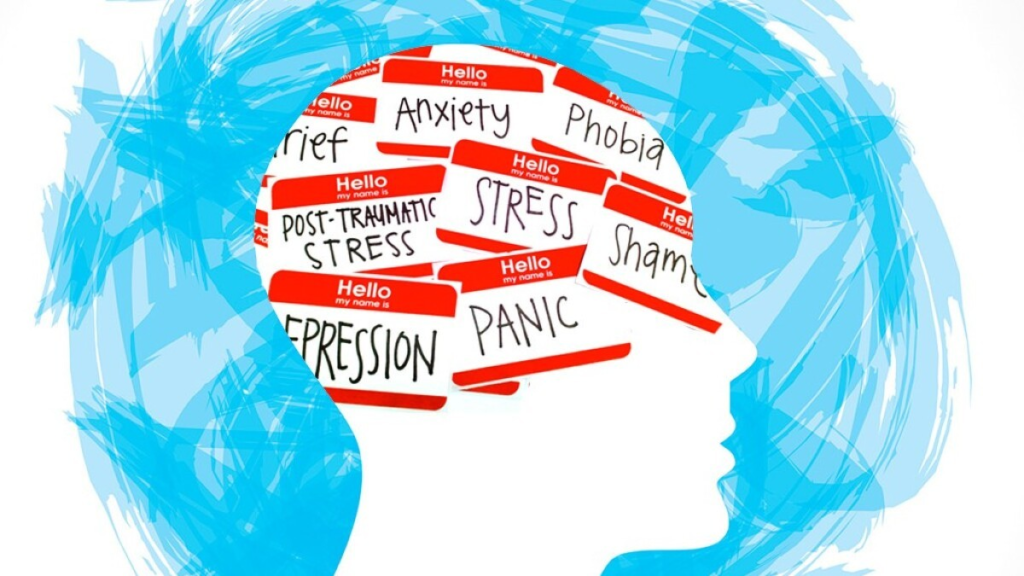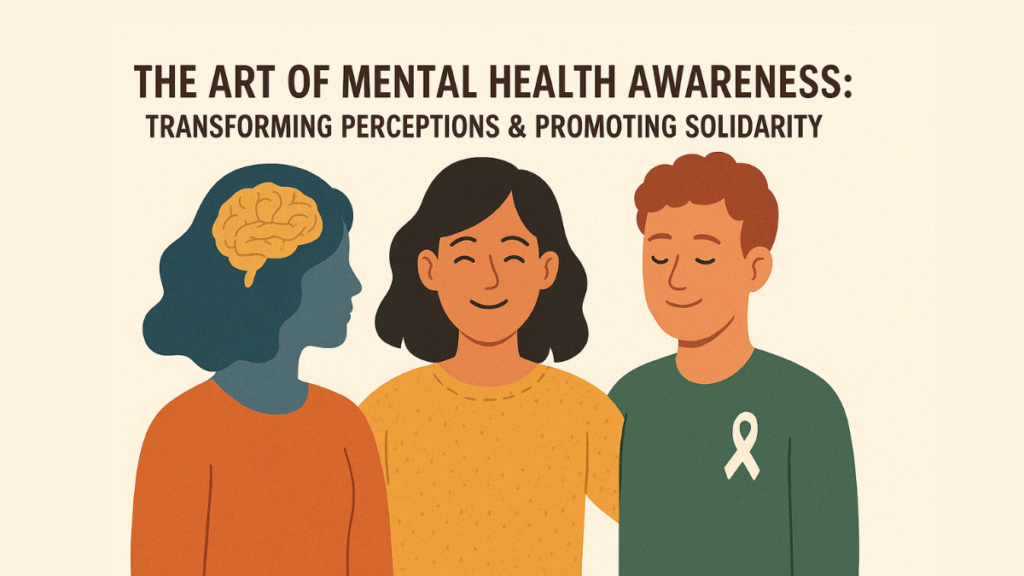Explore how the art of mental health awareness is reshaping perceptions, reducing stigma, and encouraging unity. Learn strategies, facts, and the importance of community support.
also read: https://babessproduct.com/why-a-wellness-spa-is-key-to-improving-overall-health/
Introduction
Mental health is no longer a silent topic. The art of mental health awareness is not only about knowledge—it’s a movement that transforms the way society sees and supports mental well-being. By reshaping perceptions and encouraging collective solidarity, individuals, communities, and organizations are creating an environment where mental health matters are approached with empathy, openness, and understanding.
In this article, we explore how this transformation unfolds, what it truly means, and how everyone plays a part in making mental health awareness more than a campaign—turning it into a lifestyle of support and change.
Understanding Mental Health Awareness
Mental health awareness is the ongoing effort to reduce stigma, educate people, and provide resources for those living with mental health conditions. But it’s more than just wearing a ribbon or attending a seminar—it’s about shifting public perception and building real emotional connections and support systems.

When we talk about “The Art of Mental Health Awareness: Transforming Perceptions & Promoting Solidarity,” we’re discussing a strategic and compassionate approach that blends education, advocacy, storytelling, and human connection.
How Perceptions of Mental Health Have Evolved
Historically, mental illness was cloaked in shame. Misconceptions led many to believe mental disorders were a sign of weakness or personal failure. Thankfully, the narrative is changing.
Then vs. Now: A Quick Comparison
| Aspect | Past Perception | Evolving Perception |
|---|---|---|
| Mental Illness | Seen as taboo or dangerous | Seen as a health issue |
| People with Disorders | Isolated, misunderstood | Supported, included |
| Treatment | Rare, hidden, or inaccessible | Normalized, encouraged, and diverse |
| Public Conversations | Minimal or avoided | Open and growing |
This change didn’t happen overnight. Through advocacy, mental health education, and storytelling, a more compassionate and informed society has emerged.
The Role of Media and Art in Changing Perceptions
One powerful method of transformation lies in the arts—films, music, literature, and social media. These mediums provide platforms for voices previously unheard.

When artists speak about their struggles, they humanize the experience. Movies like A Beautiful Mind and series like BoJack Horseman offer nuanced portrayals of mental health, making it easier for audiences to relate and empathize.
Art also allows expression where words fail. Visual art therapy, creative writing, and music have become therapeutic outlets for people living with depression, anxiety, PTSD, and more.
Promoting Solidarity: Why Collective Support Matters
Solidarity goes beyond sympathy. It means standing with others, offering support, and advocating for systemic changes that make mental health care more accessible and accepted.
Here’s how solidarity is being cultivated today:
- Peer Support Groups: Individuals come together to share experiences and offer emotional support without judgment.
- Workplace Wellness Initiatives: More organizations now offer mental health days, employee assistance programs, and mindfulness training.
- Community Campaigns: Events like World Mental Health Day foster global awareness and unity.
- School Programs: Educators teach children how to talk about emotions and seek help, creating future generations that normalize mental health care.
Breaking the Stigma: Why Awareness Still Matters
Despite progress, mental health stigma persists in various cultures and communities. This stigma prevents people from seeking help and contributes to feelings of shame or guilt.

Common Misconceptions Still Faced Today:
- Mental illness is rare.
- People with mental health challenges are unstable.
- Therapy is only for extreme cases.
- Taking medication is a sign of weakness.
Awareness efforts combat these myths by providing education and encouraging honest conversations.
Strategies to Strengthen Mental Health Awareness
Building a more mentally healthy society requires more than recognition—it needs action. Here are strategies individuals and organizations can implement:
For Individuals
- Speak openly about your mental health experiences.
- Learn the correct terminology and avoid derogatory language.
- Support loved ones without judgment.
- Participate in awareness walks or fundraisers.
For Organizations
- Train managers to recognize signs of stress or burnout.
- Promote employee mental health resources.
- Incorporate mental wellness into health insurance plans.
- Celebrate Mental Health Awareness Month with inclusive events.
Mental Health Awareness Across Cultures
Cultural perceptions of mental health can shape how individuals understand and respond to their symptoms. In some cultures, mental illness is heavily stigmatized or viewed as a spiritual issue.
Therefore, culturally sensitive awareness is essential. Advocacy needs to include diverse perspectives, respecting unique cultural values while still promoting help-seeking and education.
Measuring the Impact of Awareness
How do we know if mental health awareness efforts are working? Here are some indicators:
| Metric | What It Tells Us |
|---|---|
| Increase in therapy usage | People feel safer seeking professional help |
| Mental health policies enacted | Governments and institutions are prioritizing care |
| Reduced stigma in surveys | Public opinion is becoming more compassionate |
| Social media engagement | More people are talking about mental health openly |
Challenges That Still Remain
Even with increased awareness, there are barriers:
- Access to care: In many regions, therapy and psychiatric services remain expensive or unavailable.
- Insurance limitations: Coverage for mental health still lags behind physical health in some systems.
- Burnout among advocates: Constantly educating and supporting others can be emotionally draining.
- Misinformation: Myths continue to spread, especially on unregulated platforms online.
Conclusion
The Art of Mental Health Awareness: Transforming Perceptions & Promoting Solidarity is not a one-time campaign—it’s an ongoing evolution. By blending creativity, education, advocacy, and collective support, we’re creating a world where mental health is discussed with the same urgency and compassion as physical health.
The path ahead requires empathy, action, and unity. Through honest conversations, community support, and cultural sensitivity, we can eliminate stigma and build a future where everyone feels safe seeking help.
FAQs on The Art of Mental Health Awareness
1. How can schools promote mental health awareness among students?
By incorporating emotional intelligence training, peer support systems, and access to school counselors.
2. What is the connection between mental health awareness and suicide prevention?
Awareness reduces stigma, encourages early intervention, and helps prevent crises like suicide.
3. Can art therapy be used as a tool for mental health advocacy?
Yes, art therapy can be both a personal healing method and a public tool for spreading awareness.
4. How does cultural background influence mental health perceptions?
Cultural beliefs shape how people interpret symptoms, seek help, and talk about mental health.
5. Is it possible to measure mental health awareness in a community?
Yes, through surveys, participation rates in programs, and mental health service usage data.
6. What’s the role of digital platforms in mental health advocacy?
They amplify voices, provide resources, and foster online communities of support and learning.
7. How can employers contribute to transforming perceptions of mental health?
By creating open dialogue, offering mental health resources, and normalizing help-seeking at work.
8. Are there global mental health awareness campaigns?
Yes, campaigns like World Mental Health Day and Bell Let’s Talk create global momentum.
9. How do celebrities impact mental health awareness?
Their openness can reduce stigma and inspire millions to talk about and seek help for mental health.
10. What are some signs that someone may need mental health support?
Changes in mood, withdrawal from activities, lack of motivation, sleep issues, and persistent sadness.
also read: https://babessproduct.com/mental-health-day-success-stories-tips-for-ongoing-support/
also read: https://babessproduct.com/why-your-mental-health-is-of-priority-strategies-for-a-happier-life/

